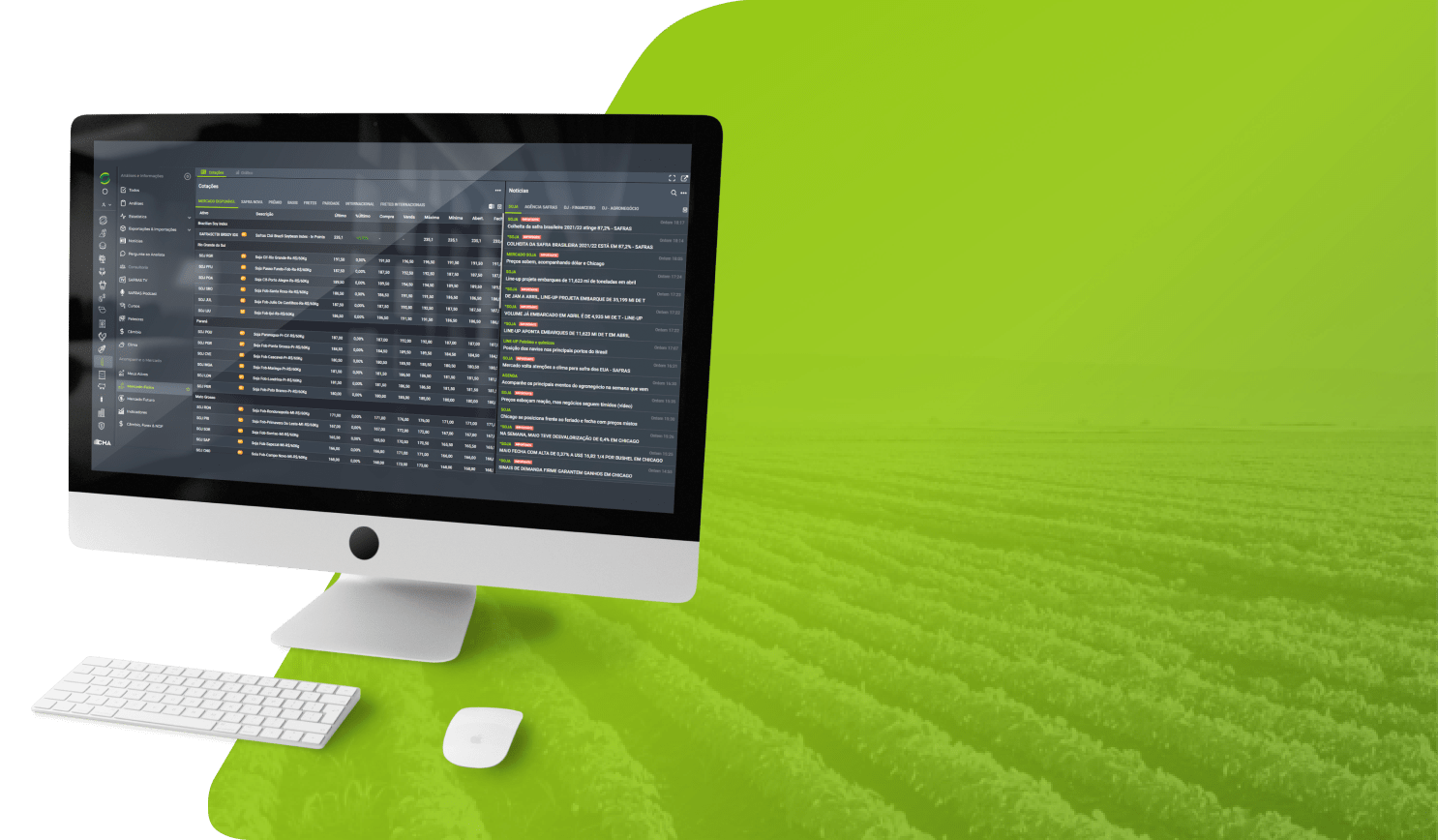Porto Alegre, June 5th 2024 – The Brazilian corn market is beginning to reap in several locations but with the strongest supply expected to be concentrated in July this year. Information about second-crop losses in Paraná and Mato Grosso do Sul affects the grower’s sales decision more than a real problem of future supply. The issue, as we have indicated in our newsletters, from now on focuses on exports. In this environment, the shipment schedule reaches one mln tons in June, nothing out of the ordinary. The exchange rate and the wheat environment in the international market are the points that can help prices at ports in Brazil and avoid any greater pressure on second-crop prices. In any situation, exports will continue to be the bearish or bullish factor for the domestic market.
We must begin the Brazilian internal issue with an important warning. The government’s untimely and aggressive decision to import a large volume of rice, under the allegation of the Rio Grande do Sul’s catastrophe, sets a worrying precedent. The government intends to import, package, and distribute this imported product in the retail network. Without a doubt, an unprecedented act in the recent history of national agribusiness, perhaps resuming the era when the government used to control all internal agricultural trade, such as wheat, for example. The measure is unprecedentedly aggressive and affects the entire internal structure of production, trading and distribution of national agribusiness. The precedent? If there is a rise in chicken meat prices, will the government adopt the same measure? Corn, soybeans, coffee, sugar, and so on? In fact, there are already some versions within the government that there will be a “shortage” of corn in 2024, despite our 40 mln tons for exports.
The domestic corn market shows firm prices in the South and Southeast states. The second-crop harvest is just beginning in Paraná and Mato Grosso do Sul and will not begin in São Paulo and Minas Gerais this June. So, this interval between the end of summer and the beginning of the second crop seems natural for some regional buying difficulties to exist, and this supports prices. Furthermore, growers in the north of Paraná and part of Mato Grosso do Sul are, evidently, observing their production, assessing losses, and until they start harvesting they will not know how much they will be able to sell on the market. The news of these losses seems to accelerate this selling indecision of growers.
On the other hand, the harvest is progressing in Mato Grosso and beginning in Goiás. High productivity, need for space, credit to buy inputs for soybeans with second-crop corn, flat to lower port prices, all of this will put pressure on the market in these regions as the harvest moves on. This year’s forward trading is not enough to empty the market already at harvest, and, therefore, as the crop arrives, the market is boosting sales.
At this point, we follow the natural logic of the market: exports. With the harvest advancing, the focus is on the flow rate of this 2024 crop. Exports determine this environment. March, April and May close with only 700 thousand tons actually shipped in national ports, compared to more than 2 mln tons in 2023 in the period. June opens with a shipping queue of close to one mln tons, nothing out of the ordinary for this month of the arrival of the corn second crop.
For now, all the effort to reach 40 mln tons of exports in the business year is this second half. From now on, Brazil will need to average close to 5 mln tons/month by January to reach this annual target. For now, prices in the South and Southeast regions are above port levels, such as: São Paulo BRL 60 in the interior, Paraná BRL 57/58, Mato Grosso do Sul BRL 50/54, and Minas Gerais BRL 52/53. The port is between BRL 60/62, but for shipments after August, this export math does not make it viable. This means that if prices in these regions do not adapt to the arrival of the second crop, making exports feasible, such states should export very little corn this year. The result is stocks held by consumers and growers being transferred to the end of the year or to 2025.
On the other hand, Mato Grosso, Goiás, and the Matopiba region do not have the possibility of retaining part of the large second crop that is beginning to be reaped. The export path seems inevitable, and, therefore, the port of Santarém (PA) already receives a good volume of ships in its schedule. Barcarena and São Luís will likely advance in the same way as soon as soybean shipments reduce and second-crop corn harvests improve.
With the port controlling prices in the North and the domestic market trying to manage prices in the South, the market now depends on the volatility of prices on the CBOT amid the development of the US crop to determine port levels. Prices on the CBOT have little room for sharp lows, but they need something consistent to establish highs. Wheat has been the new fact in recent weeks, and perhaps by the end of the year and 2025 it could be an important component for international prices. The exchange rate in Brazil has reflected the current economic policy and helped to reduce pressure on ports. Climate in the United States, wheat on the international market, exchange rate, and flow of shipments are the factors for the second half of the year.
Copyright 2024 – Grupo CMA





